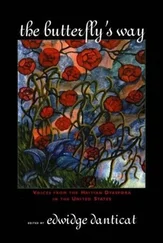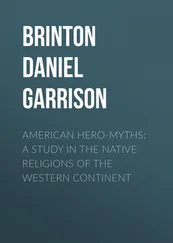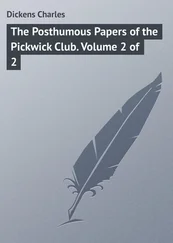Hubert Bancroft - The Native Races [of the Pacific states], Volume 1, Wild Tribes
Здесь есть возможность читать онлайн «Hubert Bancroft - The Native Races [of the Pacific states], Volume 1, Wild Tribes» — ознакомительный отрывок электронной книги совершенно бесплатно, а после прочтения отрывка купить полную версию. В некоторых случаях можно слушать аудио, скачать через торрент в формате fb2 и присутствует краткое содержание. ISBN: , Жанр: foreign_antique, foreign_prose, на английском языке. Описание произведения, (предисловие) а так же отзывы посетителей доступны на портале библиотеки ЛибКат.
- Название:The Native Races [of the Pacific states], Volume 1, Wild Tribes
- Автор:
- Жанр:
- Год:неизвестен
- ISBN:http://www.gutenberg.org/ebooks/41070
- Рейтинг книги:5 / 5. Голосов: 1
-
Избранное:Добавить в избранное
- Отзывы:
-
Ваша оценка:
- 100
- 1
- 2
- 3
- 4
- 5
The Native Races [of the Pacific states], Volume 1, Wild Tribes: краткое содержание, описание и аннотация
Предлагаем к чтению аннотацию, описание, краткое содержание или предисловие (зависит от того, что написал сам автор книги «The Native Races [of the Pacific states], Volume 1, Wild Tribes»). Если вы не нашли необходимую информацию о книге — напишите в комментариях, мы постараемся отыскать её.
The Native Races [of the Pacific states], Volume 1, Wild Tribes — читать онлайн ознакомительный отрывок
Ниже представлен текст книги, разбитый по страницам. Система сохранения места последней прочитанной страницы, позволяет с удобством читать онлайн бесплатно книгу «The Native Races [of the Pacific states], Volume 1, Wild Tribes», без необходимости каждый раз заново искать на чём Вы остановились. Поставьте закладку, и сможете в любой момент перейти на страницу, на которой закончили чтение.
Интервал:
Закладка:
394
Additional notes and references on procuring food. The Okanagans break up winter quarters in February; wander about in small bands till June. Assemble on the river and divide into two parties of men and two of women for fishing and dressing fish, hunting and digging roots, until October; hunt in small parties in the mountains or the interior for four or six weeks; and then go into winter quarters on the small rivers. Ross' Adven. , pp. 314-16. Further south on the Columbia plains the natives collect and dry roots until May; fish on the north bank of the river till September, burying the fish; dig camas on the plains till snow falls; and retire to the foot of the mountains to hunt deer and elk through the winter. The Nez Percés catch salmon and dig roots in summer; hunt deer on snow-shoes in winter; and cross the mountains for buffalo in spring. Sokulks live on fish, roots, and antelope. Eneeshur, Echeloots, and Chilluckittequaw, on fish, berries, roots and nuts. Lewis and Clarke's Trav. , pp. 444-5, 340-1, 352, 365, 370. Spokanes live on deer, wild fowl, salmon, trout, carp, pine-moss, roots and wild fruit. They have no repugnance to horse-flesh, but never kill horses for food. The Sinapoils live on salmon, camas, and an occasional small deer. The Chaudiere country well stocked with game, fish and fruit. Cox's Adven. , vol. i., p. 201, vol. ii., p. 145. The Kayuse live on fish, game, and camass bread. De Smet , Voy. , pp. 30-1. 'Ils cultivent avec succès le blé, les patates, les pois et plusieurs autres légumes et fruits.' Id. , Miss. de l'Orégon. , p. 67. Pend d'Oreilles; fish, Kamash, and pine-tree moss. Id. , West. Missions , p. 284. 'Whole time was occupied in providing for their bellies, which were rarely full.' Ind. Aff. Rept. , 1854, p. 211. Yakimas and Kliketats; Unis or fresh-water muscles, little game, sage-fowl and grouse, kamas, berries, salmon. The Okanagans raise some potatoes. Gibbs , in Pac. R. R. Rept. , vol. i., pp. 404, 408, 413. Kootenais; fish and wild fowl, berries and pounded meat, have cows and oxen. Palliser's Explor. , pp. 10, 72. Palouse; fish, birds, and small animals. Umatillas; fish, sage-cocks, prairie-hares. Lord's Nat. , vol. ii., pp. 97, 105-6. Tushepaws would not permit horses or dogs to be eaten. Irving's Astoria , p. 316. Nez Percés; beaver, elk, deer, white bear, and mountain sheep, also steamed roots. Id. , Bonneville's Adven. , p. 301. Sahaptin; gather cherries and berries on Clarke River. Gass' Jour. , p. 193; Nicolay's Ogn. Ter. , p. 151; Hines' Voy. , p. 167; Brownell's Ind. Races , pp. 533-5; Stanley's Portraits , pp. 63-71; Catlin's N. Am. Ind. , vol. ii., p. 108; Kane's Wand. , pp. 263-4; Parker's Explor. Tour , pp. 228-31, 309; Wilkes' Nar. , in U. S. Ex. Ex. , vol. iv., p. 474; Hale's Ethnog. , Ib. , vol. vi., p. 206.
395
Lewis and Clarke's Trav. , pp. 383, 548; Parker's Explor. Tour , pp. 230, 312; Townsend's Nar. , p. 148; De Smet , Voy. , pp. 46-7, 198; Cox's Adven. , vol. i., pp. 197-9, 358, vol. ii., pp. 155, 373, 375; Coke's Rocky Mts. , p. 295; Palmer's Jour. , pp. 54, 58, 59.
396
The Okanagan weapon is called a Spampt . Ross' Adven. , pp. 318-19; Id. , Fur Hunters , vol. i., pp. 306-8. 'Ils … faire leurs arcs d'un bois très-élastique, ou de la corne du cerf.' De Smet , Voy. , p. 48; Wilkes' Nar. , in U. S. Ex. Ex. , vol. iv., p. 488; Stevens , in Pac. R. R. Rept. , vol. i., p. 405; Townsend's Nar. , p. 98; Irving's Astoria , p. 317; Lewis and Clarke's Trav. , p. 351; Parker's Explor. Tour , pp. 106-7, 233; Cox's Adven. , vol. i., p. 216.
397
Torture of Blackfeet prisoners; burning with a red-hot gun-barrel, pulling out the nails, taking off fingers, scooping out the eyes, scalping, revolting cruelties to female captives. The disputed right of the Flatheads to hunt buffalo at the eastern foot of the mountains is the cause of the long-continued hostility. The wisest and bravest is annually elected war chief. The war chief carries a long whip and secures discipline by flagellation. Except a few feathers and pieces of red cloth, both the Flathead and Kootenai enter battle perfectly naked. Cox's Adven. , vol. i., pp. 232-45, vol. ii., p. 160. The Cayuse and Sahaptin are the most warlike of all the southern tribes. The Nez Percés good warriors, but do not follow war as a profession. Ross' Fur Hunters , vol. i., pp. 185-6, 305, 308-12, vol. ii., pp. 93-6, 139. Among the Okanagans 'the hot bath, council, and ceremony of smoking the great pipe before war, is always religiously observed. Their laws, however, admit of no compulsion, nor is the chief's authority implicitly obeyed on these occasions; consequently, every one judges for himself, and either goes or stays as he thinks proper. With a view, however, to obviate this defect in their system, they have instituted the dance, which answers every purpose of a recruiting service.' 'Every man, therefore, who enters within this ring and joins in the dance … is in honour bound to assist in carrying on the war.' Id. , Adven. pp. 319-20. Mock battles and military display for the entertainment of white visitors. Hines' Voy. , pp. 173-4. The Chilluckittequaws cut off the forefingers of a slain enemy as trophies. Lewis and Clarke's Trav. , pp. 375-6. When scouting, 'Flathead chief would ride at full gallop so near the foe as to flap in their faces the eagle's tail streaming behind (from his cap), yet no one dared seize the tail or streamer, it being considered sacrilegious and fraught with misfortune to touch it.' Tolmie , in Lord's Nat. , vol. ii., p. 238. A thousand Walla Wallas came to the Sacramento River in 1846, to avenge the death of a young chief killed by an American about a year before. Colton's Three Years in Cal. , p. 52. One Flathead is said to be equal to four Blackfeet in battle. De Smet , Voy. , pp. 31, 49; Dunn's Oregon , pp. 312-13; Gray's Hist. Ogn. , pp. 171-4; Parker's Explor. Tour , pp. 233-7; Stanley's Portraits , pp. 65-71; Ind. Life , pp. 23-5; Wilkes' Nar. , in U. S. Ex. Ex. , vol. iv., p. 495.
398
White marl clay used to cleanse skin robes, by making it into a paste, rubbing it on the hide and leaving it to dry, after which it is rubbed off. Saddles usually sit uneasily on the horse's back. Parker's Explor. Tour , pp. 106, 232-4. 'Mallet of stone curiously carved' among the Sokulks. Near the Cascades was seen a ladder resembling those used by the whites. The Pishquitpaws used 'a saddle or pad of dressed skin, stuffed with goats' hair.' Lewis and Clarke's Trav. , pp. 353, 370, 375, 528. On the Fraser a rough kind of isinglass was at one time prepared and traded to the Hudson Bay Company. Lord's Nat. , vol. i., p. 177. 'The Sahaptins still make a kind of vase of lava, somewhat in the shape of a crucible, but very wide; they use it as a mortar for pounding the grain, of which they make cakes.' Domenech's Deserts , vol. ii., pp. 64, 243. (Undoubtedly an error.) Pend d'Oreilles; 'les femmes … font des nattes de joncs, des paniers, et des chapeaux sans bords.' De Smet , Voy. , p. 199. 'Nearly all (the Shushwaps) use the Spanish wooden saddle, which they make with much skill.' Mayne's B. C. , pp. 301-2. 'The saddles for women differ in form, being furnished with the antlers of a deer, so as to resemble the high pommelled saddle of the Mexican ladies.' Franchère's Nar. , pp. 269-70; Palmer's Jour. , p. 129; Irving's Astoria , p. 317, 365; Cox's Adven. , vol. i., pp. 148-9.
Читать дальшеИнтервал:
Закладка:
Похожие книги на «The Native Races [of the Pacific states], Volume 1, Wild Tribes»
Представляем Вашему вниманию похожие книги на «The Native Races [of the Pacific states], Volume 1, Wild Tribes» списком для выбора. Мы отобрали схожую по названию и смыслу литературу в надежде предоставить читателям больше вариантов отыскать новые, интересные, ещё непрочитанные произведения.
Обсуждение, отзывы о книге «The Native Races [of the Pacific states], Volume 1, Wild Tribes» и просто собственные мнения читателей. Оставьте ваши комментарии, напишите, что Вы думаете о произведении, его смысле или главных героях. Укажите что конкретно понравилось, а что нет, и почему Вы так считаете.
![Hubert Bancroft The Native Races [of the Pacific states], Volume 1, Wild Tribes обложка книги](/books/750126/hubert-bancroft-the-native-races-of-the-pacific-s-cover.webp)








![Hubert Bancroft - The Native Races [of the Pacific states], Volume 5, Primitive History](/books/749157/hubert-bancroft-the-native-races-of-the-pacific-s-thumb.webp)


